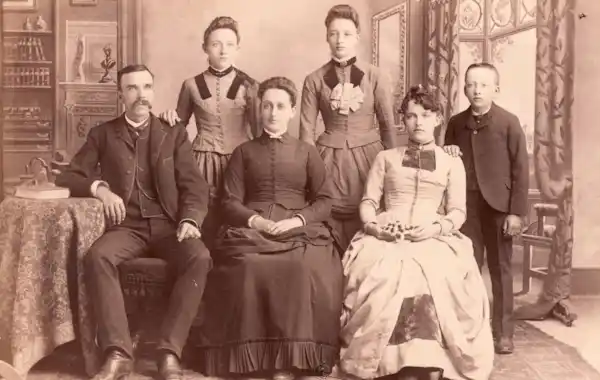Trace your ancestors back to Victorian times with our simple steps and round-up of resources available for finding family in the 1900s.
When you think about family history, perhaps you imagine lots of dusty old records, and might be bewildered about where to start. Maybe you’re wondering how to make that connection between your life and that of your ancestors in times gone by. If so, we can help you.
Follow our simple steps below and we will show you how to piece together the past, so that you can trace your family history back, decade by decade, through the 1900s - and soon you’ll have researched more than a century of your own family’s history!
Starting your family history
With family history, the very first rule is ‘Start with yourself’. Note down your name and birthdate and place. Then jot down your parents’ names and birthdates and places too. You will now have the making of a miniature branch of your family tree - but, of course - you want to find out more.
6 searchable records for tracing ancestors in the 20th century
Records for living people sometimes have restricted access, to protect their privacy, but the following records are online and publicly available. So read on to find out what these records are, and how they can help you trace your family tree...
1. Look in the phone book
Check online phone directories such as 192.com or perhaps browse the collection in your local library. Finding your ancestor’s phone number can give you an idea where your ancestor was living at a certain time - and also maybe even help you get in contact with a long-lost relation.
2. Search birth, marriage and death indexes
Known as BMDs, these are the building blocks of your family tree. The indexes of BMDs are available online for England and Wales up until 2005 on commercial sites such as Ancestry, FindMyPast and TheGenealogist. In addition, FreeBMD provides free access to the indexes (but coverage varies, and is incomplete for recent years).
3. Investigate the 1939 Register
At the start of World War 2 the state took a headcount of the entire population of England, Wales, Scotland and Northern Ireland (so that it could sort out rationing, identity cards and conscription) - and the records for England and Wales can now be searched at FindMyPast.
The 1939 Register is particularly useful as it lists people at their home address and includes their precise birthday. If you know your ancestor’s birthday this will really help you identify them from among the other 45 million people recorded on this massive national register.
4. Study the 1911 Census
The census is especially useful as it lists people by household, helping you to find and identify whole family groups in one go (think back to the times when you’ve filled in a census form - it’s roughly the same idea). Available via the subscription sites mentioned above, the 1911 Census takes your research back to the Edwardian era, and, by looking at the earlier census in 1901, you can find ancestors there, and take your research back one decade more - yippee!
5. Browse old newspapers
Did you put your marriage or perhaps your baby’s birth in the local paper? Well, perhaps your ancestors did the same. Find notices of births, marriages and death and other juicy details about your ancestors when you look back at newspapers from years gone by. Your local archive will provide papers from the area but for national coverage try the British Newspaper Archive (also accessible via FindMyPast).
6. Don't forget Google
In your quest to trace your family tree back through the 20th century, don’t forget simply to search the internet and see what turns up. By using long-tail searches (such as an ancestor’s name including middle names) you may stumble on a useful web page.
Other useful records include trade directories, passenger lists and electoral registers. See other ‘how to guides’ for in depth tips to take your research further.
As you can see, many of the records you need to use to trace your family tree have been digitised and made available online - which is great news. If you’re unsure which sites you need, why not look out for free trials or discount offers to help you save while you get the lie of the land.







